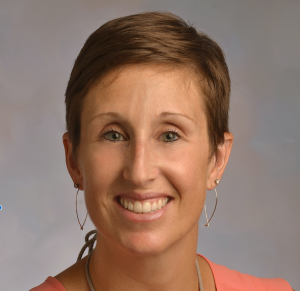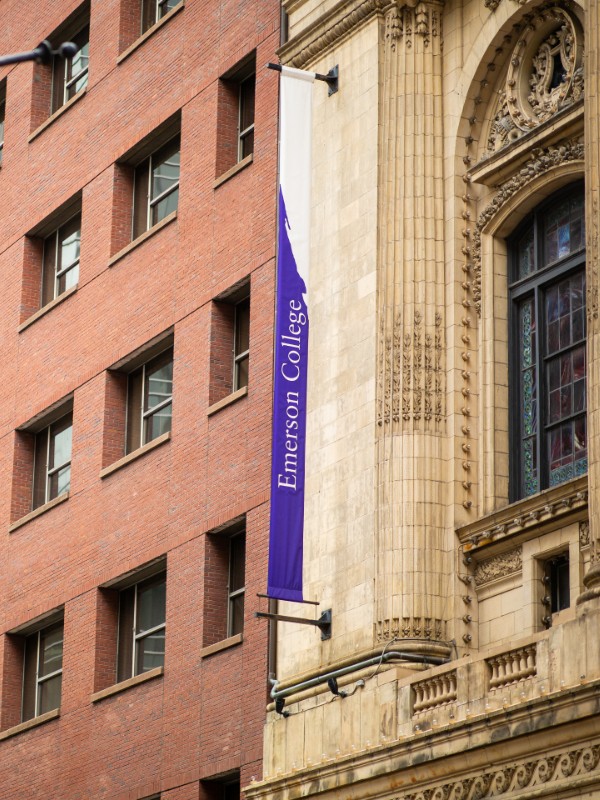Interview With Dr. Erinn Finke of University of Tennessee

Erinn H. Finke is an Associate Professor in the Department of Audiology and Speech Pathology at the University of Tennessee Health Science Center. Her research is clinically based and is largely focused on school-age, adolescent, and young adults. Her primary research interest is improving friendship outcomes for people on the autism spectrum. She runs the Autism Social Development lab where studies involving video games and other activities of high and mutual interest are underway with the objective of determining how to create intervention environments where friendships may be established or maintained.
Note: You should consult with your doctor or speech pathologist for recommendations on treatment. The views and opinions expressed in this article are those of Dr. Finke and do not necessarily reflect the official policy or position of SpeechPathologyMastersPrograms.com
How did you become interested in social and friendship interventions?
Before returning to Penn State for my Ph.D. program, I worked as a speech-language pathologist in a school context. During this time I learned how important it is to families that their children with autism have a solid, reliable, and strong social network that includes “real” friends. I also began to realize that teaching social skills was good, but it most definitely was not enough to meet this goal. As a doctoral student, I began to think about the characteristics of a desirable play partner. At the time I thought peer-mediated interventions involving kids with and without autism would be the best solution, which is the perspective from which I designed my dissertation project. Over time, my thinking about friendships and social interventions has evolved, and my current line of thinking has resulted in a proposed reconceptualization of how we approach intervention targeting friendship-based outcomes (Finke, 2016). In this paper I proposed several factors that seem likely to offer the most optimal context for kids with autism to make friends. Specifically, I believe we need to seek intervention contexts in which the children with autism and their peers can obtain equal status, engage in a mutually motivating authentic activity or interest, and have repeated opportunities to interact positively with each other.
What are some of the most important things we have learned about how children with Autism Spectrum Disorder (ASD) socialize and build relationships over the past couple of decades?
People with autism often report challenges associated with making and maintaining friendships (e.g., Daniels & Billingsley, 2010; Vine Foggo & Webster, 2017). According to the extant literature, these challenges appear to be different for boys and girls. Boys with autism have reported difficulty choosing potential friend candidates and in making initial advances to establish new friendships (Daniels & Billingsley, 2010). Girls with autism report social interaction is important to them, but difficult, and have reported being less confident in group situations and actively avoiding conflict with their friends (Vine Foggo & Webster, 2017).
Both boys and girls with autism have reported having friends of varying levels of intensity and being interested in socializing with their peers (e.g., Bauminger et al., 2008). Similar to their peers without autism, both girls and boys with autism have reported socializing most regularly with same gender peers, and report having fewer friends overall than their peers without autism (Dean, Kasari, Shih, Frabkel, Whitney, Orlich, Landa, et al., 2014). Contrary to popular belief, however, most people with autism report having at least one reciprocal friendship (Mendelson, Gates, & Lerner, 2016).
How can interventions help these children build better relationships?
What emerging science can tell SLPs is that there are two paths for intervention. One is reactive, and one is proactive, both of which can be appropriate at different points in time and with different individuals. A proactive approach to intervention would be one in which friendship-based outcomes are considered and planned for prior to the child with autism experiencing recognized social failure. A reactive approach to intervention would be one where friendship-based outcomes are targeted after the child with autism has experienced some social failure, but is still interested in having some, or more, friends. Any of the factors below could be considered and used in either a proactive intervention plan or a reactive intervention plan.
One of the variables SLPs can think about during the intervention planning process is about the match between the students who they may be grouping together for social skills or social interaction intervention sessions. Girls with autism are generally better at determining who to approach in a friendship capacity than boys with autism. The research literature to date provides very little guidance on the characteristics of people who tend to be good friends for people with autism. Some of the factors that may be important to consider in helping students with autism find “matches“ may include two of the factors proposed in Finke (2016), primarily the idea of equal status and having a mutually motivating common interest. Mutually motivating interests are those that both of the children enjoy and would choose to engage in during free time on their own. This could be a common interest in a sport, in theater, in playing video games, the options are potentially endless.
SLPs may also want to teach their clients with autism some new skills that may increase success in social interactions with peers. This is sometimes a very appropriate course of action as there are certainly times when people with autism need new skills to initiate or maintain interactions with their peers. BUT, remember, if you are interested in a friendship-based outcome (versus a social skill outcome) working on the skills of only one of the friends will likely not result in a friendship-based outcome. So, I would encourage SLPs to think about skills instruction for both friends as well as having them practice the targeted skills individually as well as in interactions together. Planning intervention for specific friend pairs will be important.
Clinicians also might want to think about working on different skills with girls with autism and boys with autism. Girls with autism would probably benefit from working on conflict management and expressing differences of opinion with friends while boys with autism might benefit from learning about how to show interest in peers and how to choose activities to engage in with peers that will be mutually motivating and also may accommodate possible differences in the social processing times between boys with and without autism (Mendelson, Gates, & Lerner, 2016).
What are some of the barriers to getting children with ASD the help they need in this area?
One of my most recently completed studies (Finke & McCarthy, still under review as of December 2018) investigated the preferences of individuals with and without autism with respect to their friendship style. The results of this project indicated a lack of congruence in almost all of the areas surveyed between young adults with and without autism at the group level of analysis. This is interesting because it may provide a potential explanation for the higher proportion of individuals with autism who report being friends with other people with autism (Bauminger & Kasari, 2000; Bauminger & Shulman, 2003; Bauminger, Solomon, Aviezer, Heung, Gazit, Brown & Rogers, 2008a; Cook et al., 2017; Locke, Ishijima, Kasari & London, 2010). According to the results of this newly finished study, young adults with autism have a higher likelihood of having congruent perspectives and preferences in friendships with other young adults with autism than with their peers without autism.
This finding has important clinical implications. Though friendships should not, and cannot, be artificially prescribed (Finke, 2016), these results can guide clinicians, teachers, parents, and others involved in the daily lives of individuals with autism in creating opportunities for interactions with others on the spectrum. These findings can also support the assertions that considering other formats for interaction, other than face-to-face, may better accommodate the preferences of people with autism (Finke, 2016).
What I learned from this study is that people with autism want to have friends, they want to have more than one friend, and they have stated some preferences about how those friendships be constructed. The participants with autism in this project reported they would generally prefer less physical and emotional closeness in their relationships (which could be considered a barrier to friendship outcomes when trying to make or maintain a friendship with a person without autism).Though it is not known how the preferences reported in this project would translate to real life interactions with other people, and how they manifest during the friendship formation process, this information can provide a new basis for understanding the friendships of young adults with autism and for deciding how to support the friendships of individuals on the autism spectrum.
What inspired you to start researching the conversations had by children in video games? What do you hope to learn from this research?
A few years ago I met and established a collaboration with another faculty member who studied video games as a leisure activity. Our collaboration grew out of our hypothesis that children with autism like and play videogames as much, if not more than, children without autism (Finke, Hickerson & McLaughlin, 2015). As we discussed the impact of videogames for people with autism broadly, I began to consider the social implications specifically. I realized video games might be an interesting and valuable context for friendship formation and maintenance. In thinking about how to capitalize on this mutually motivating activity, I recognized the need to establish a baseline for how communication and interaction happens during video game play between friends. My lab initiated, and just completed, data collection for a project that examined the conversations and interactions between established friends while they played video games. We further examined the impact of the videogame type (competitive vs cooperative) on the nature and content of the interaction between the friends. Initial results indicate first, that friends talk to each other a lot while they play video games together. Second, the type of game they play affects the nature of the conversations the friends have. That is, it appears friends’ conversations are more game-centric when the friends played competitive games (e.g., sports games) than when they played cooperative games (e.g., joint mission games). Now that we have this data, we can better construct opportunities for people with autism to establish or maintain friendships with their peers during this type of an activity.
How does the Social Development and Friendship laboratory select new research projects?
This is an interesting question. New projects are usually selected as a group with the people working in the lab (my labbies). This includes undergraduate students, graduate students, Ph.D. students, two people with autism, myself, as well as other faculty research collaborators. Generally we begin the process of initiating a new project each time data collection is completed for another project. I usually have about 3-4 projects up and running and at various stages at any one point in time.
When it is time to start a new project I will usually devote one whole lab meeting to brainstorming ideas. The brainstorm is initiated by reviewing the projects that are ongoing, what we are learning from those projects, and what we think they are contributing to the overall goal of the lab, to improve long-term social and friendship-based outcomes for and with individuals with autism. We also review the emerging results from the project that is just ending and, as a group, spend about an hour coming up with ideas about where we might be able to go next with our work. This includes ideas that range from what might be interesting to learn, what we are curious about based on what we learned from the last project, and overall how we want to move forward as a lab. I truly think of the lab as shared work. I could not do what I do without all of those other people giving their time, energy, and intellectual capacity to the research projects. I feel like when we all have a say we are all more invested, number one, and number two the projects that come out of those sessions are much more interesting than they would be if I was making all the decisions on my own. The people I work with are incredibly creative, and interesting, and invested. The things they want to learn about are things I want to learn about too.
What aspect of your research are you most proud of?
I am most proud of the functional impact of my research and that what I learn might help people have the lives they want for themselves.
Any advice for future SLP students?
The best advice I can offer future SLPs and SLP students, I think, is not to compare yourself to other people and to be the best you that you can be. This means doing what you think is best for your clients no matter what anyone else is doing. It means being bold and passionate for the job you do and the people you work with. It means being creative and cutting edge. Think outside the box and try new ideas. Challenge yourself to continue to learn and develop new areas of knowledge and skill.
A little story about how I have tried to live this in my life recently:
One of my students saw me at the ASHA 2018 convention and asked me if I was learning anything new. I told her I was trying something new at the conference. I decided I was going to pick one topic outside my direct areas of expertise to learn about intensely. For example, at ASHA 2018 I attended sessions almost entirely on reading and writing interventions. I did this with the intent of not only learning something new, but also being able to develop better content for the language disorders course I teach for masters level SLP students. This, for me, was an outside of the box idea. I would usually be inclined to go to sessions on autism and social interventions, or sessions on technology and communication, but to LEARN something new I had to DO something different. This turned out to be a great way for me to challenge myself to continue to develop myself as a clinician and teacher.
Ultimately, my hope is for future generations of SLPs is to love what they do as much as I love what I do. That can be hard to do year after year, but I think the more variety you can work into your clinical approaches, the more creativity you can bring, and the more you can make each day a challenging problem solving activity, the easier it will be and the more fun you will have.
Sponsored online speech pathology programs

Online MS: Pursue SLP Certification. Study FT/PT
Speech@Emerson enables you to earn an MS online and pursue SLP certification in as few as 20 mos. Learn the same curriculum as the on-campus program. Study FT or PT.
- Prepares you to pursue certification as an SLP generalist
- In-person clinical placements at faculty-approved partner sites
- As few as 20 months to complete
SPONSORED

Want to Become an SLP? Earn an MS Online at NYU
NYU Steinhardt’s online master of science program in Communicative Sciences and Disorders prepares aspiring speech-language pathologists with a comprehensive professional education.
- Prepares students to pursue SLP licensure
- Accredited by ASHA’s Council on Academic Accreditation
- As few as six terms to complete
- Full-time and part-time plans of study
SPONSORED

